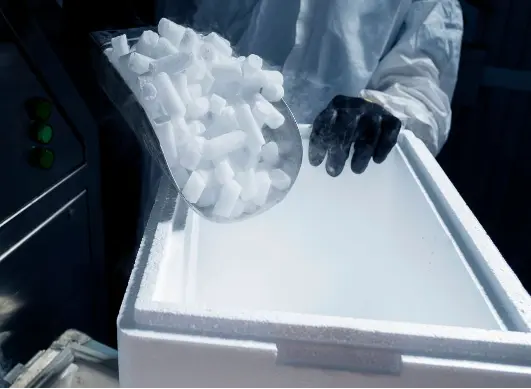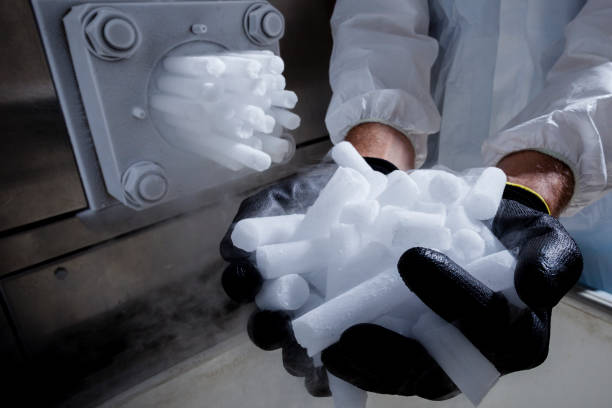Unleash the Power of Dry Ice: 10 Versatile Applications Beyond Food and Medicine

Dry Ice’s Multifaceted Applications You Must Explore
Dry ice, scientifically known as solid carbon dioxide (CO2), stands as a frozen marvel with myriad applications beyond its renowned roles in the food and medical sectors. While it is celebrated for food preservation and safe transportation, its versatility extends into lesser-known realms. In this comprehensive article, we’ll delve into the versatile applications of dry ice that you should be well-acquainted with.
Table of Contents
- Understanding Dry Ice
- The Art of Dry Ice Production
- Exploring Dry Ice’s Physical Properties
- Diverse Uses of Dry Ice
- Preserving Edibles
- Temperature-Controlled Shipping
- Creating Fog and Smoke Effects
- Harnessing the Power of Dry Ice Blasting
- Efficient Refrigeration and Cooling
- Carbonating Beverages with Dry Ice
- Effective Insect Control
- Dry Ice in Laboratories
- Dry Ice for Cleaning and Maintenance
- Artistic and Decorative Applications
- Safety Measures when Handling Dry Ice
- In Conclusion
- Frequently Asked Questions (FAQs)
Understanding Dry Ice

the solid form of carbon dioxide
Dry ice, the solid manifestation of carbon dioxide gas found in the atmosphere and produced industrially, transcends its conventional applications. Often referred to as cardice, its roles span far beyond food preservation and medical logistics.
The Art of Dry Ice Production
Delving into the intriguing process of dry ice production unveils the science behind its formation. Unlike regular ice, dry ice sublimates directly from solid to gas without transitioning into a liquid state. This unique characteristic makes it indispensable in various industries, including shipping, medicine, and entertainment.
Exploring Dry Ice’s Physical Properties
Dry ice maintains a frigid temperature of -78.5°C (-109.3°F) and undergoes sublimation at the same temperature under standard atmospheric pressure. It’s important to note that this sublimation process releases carbon dioxide gas, which can pose dangers in confined spaces.
Diverse Uses of Dry Ice
Preserving Edibles
Dry ice plays a crucial role in the food industry for preserving perishable items. Whether it’s keeping food cold during transit or freezing it for long-term storage, the extreme coldness of dry ice ensures safe temperatures for extended durations.
Temperature-Controlled Shipping
In the world of logistics, dry ice finds purpose in transporting goods requiring specific temperature conditions, such as medical supplies and laboratory specimens. Its extreme cold prevents spoilage and safeguards the integrity of transported products.
Creating Fog and Smoke Effects
Dry ice’s ability to produce eerie fog and smoke effects has earned it a place in the entertainment industry. When submerged in warm water, dry ice sublimates, creating a chilling fog ideal for stage productions, movies, and special events.
Harnessing the Power of Dry Ice Blasting
The cleaning industry benefits from dry ice blasting, a process that employs dry ice pellets to dislodge dirt, grime, and other contaminants from surfaces. The intense cold causes these substances to freeze, facilitating their removal.
Efficient Refrigeration and Cooling
Dry ice serves as an alternative to conventional refrigeration methods in specific scenarios, such as camping trips and outdoor events, where maintaining a specific temperature is paramount.
Carbonating Beverages with Dry Ice
Dry ice introduces effervescence to beverages like soda and beer. When added to a liquid, it sublimates, releasing carbon dioxide gas, which dissolves into the liquid, creating carbonation.
Effective Insect Control
Dry ice proves invaluable in controlling insects such as mosquitoes and flies. By sublimating and emitting carbon dioxide gas, it lures these pests. Once near the dry ice, they become trapped and easily disposable.
Dry Ice in Laboratories
Laboratories frequently employ dry ice for diverse purposes, including freezing samples, preserving specimens, and maintaining low temperatures for specific experiments.
Dry Ice for Cleaning and Maintenance
Dry ice’s cleaning and maintenance potential shines through in applications like gum and wax removal from floors and surfaces. It also offers an effective means of cleaning equipment and machinery without causing damage.
Artistic and Decorative Applications
Dry ice adds a touch of creativity and flair to artistic and decorative pursuits. It’s perfect for crafting unique centerpieces and enhancing the ambiance of parties and events. In photography, it can be used to create dramatic fog effects.
Safety Measures when Handling Dry Ice
It’s crucial to exercise caution when dealing with dry ice, given its extreme cold and potential hazards. Always wear protective gloves and work in well-ventilated areas to avoid frostbite, burns, and oxygen displacement in confined spaces.
In Conclusion
Dry ice’s versatility transcends its well-known roles in the food and medical sectors. From cleaning and artistic endeavors to insect control, it boasts a wide range of applications. However, always prioritize safety when handling dry ice.

the solid form of carbon dioxide
Frequently Asked Questions (FAQs)
- Is dry ice dangerous to handle?
Yes, dry ice can be hazardous if mishandled. Protective gloves and adequate ventilation are essential when working with it. - Can dry ice be used to carbonate beverages?
Indeed, dry ice can carbonate beverages by releasing carbon dioxide gas upon sublimation. - What is dry ice blasting?
Dry ice blasting is a cleaning technique that employs dry ice pellets to remove dirt and grime from surfaces by freezing them. - Can dry ice be used for insect control?
Absolutely, dry ice is effective in luring and trapping insects through the emission of carbon dioxide gas. - What is the temperature of dry ice?
Dry ice maintains a temperature of -78.5°C (-109.3°F).


